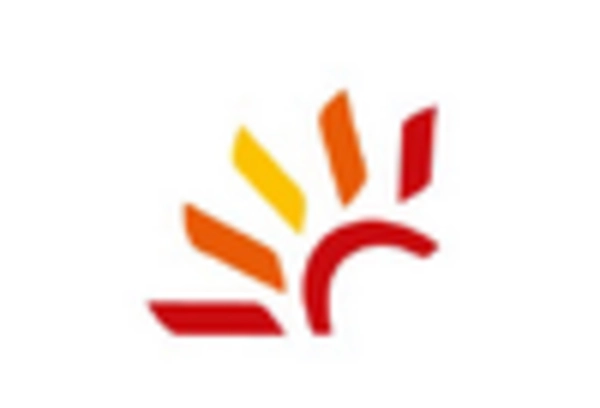Rising Energy Costs
The escalating costs of traditional energy sources are propelling the solar rooftop-sales market forward. As utility rates continue to rise, homeowners and businesses are increasingly looking for alternative energy solutions to mitigate their energy expenses. In recent years, electricity prices have risen by approximately 3% annually, prompting consumers to consider solar energy as a viable option. By investing in solar rooftop systems, users can potentially save thousands of dollars over the lifespan of the installation. This financial incentive, coupled with the long-term benefits of energy independence, is likely to drive more consumers towards solar solutions, thereby enhancing the growth trajectory of the solar rooftop-sales market.
Financing Options and Incentives
The availability of diverse financing options and incentives is a crucial driver for the solar rooftop-sales market. Various financial products, such as solar loans, leases, and power purchase agreements (PPAs), have made solar installations more accessible to a broader audience. Additionally, federal and state incentives, including tax credits and rebates, can significantly reduce the upfront costs associated with solar systems. For example, the federal solar investment tax credit (ITC) allows homeowners to deduct 26% of the installation costs from their federal taxes. Such financial mechanisms not only lower the barrier to entry for consumers but also stimulate market growth by making solar energy a more feasible option for many households and businesses.
Increased Focus on Energy Independence
The desire for energy independence is becoming a prominent driver in the solar rooftop-sales market. As geopolitical tensions and fluctuations in energy supply chains continue to affect energy prices, consumers are increasingly seeking ways to generate their own power. Solar rooftop systems offer a practical solution, allowing homeowners and businesses to produce electricity on-site and reduce reliance on external energy sources. This trend is particularly evident in regions where energy security is a concern. By investing in solar technology, consumers can not only achieve energy independence but also contribute to a more resilient energy grid. This growing emphasis on self-sufficiency is likely to propel the solar rooftop-sales market forward, as more individuals recognize the benefits of generating their own renewable energy.
Environmental Concerns and Sustainability
Growing environmental concerns are significantly influencing the solar rooftop-sales market. As awareness of climate change and its impacts increases, consumers are becoming more inclined to adopt sustainable energy solutions. The solar rooftop market plays a key role in reducing carbon footprints, as solar energy systems contribute to lower greenhouse gas emissions. According to recent data, solar energy can reduce carbon emissions by up to 80% compared to fossil fuels. This shift towards sustainability is not only a personal choice for many but also aligns with corporate social responsibility goals for businesses. Consequently, the demand for solar rooftop installations is likely to rise as individuals and organizations seek to demonstrate their commitment to environmental stewardship.
Technological Advancements in Solar Energy
The solar rooftop-sales market is experiencing a surge due to rapid technological advancements in solar energy systems. Innovations such as improved photovoltaic (PV) cell efficiency and energy storage solutions are making solar installations more attractive. For instance, the efficiency of solar panels has increased significantly, with some models achieving over 22% efficiency. This enhancement not only boosts energy output but also reduces the space required for installations, appealing to urban homeowners. Furthermore, the integration of smart technologies, such as energy management systems, allows users to optimize their energy consumption. As these technologies become more accessible, they are likely to drive growth in the solar rooftop-sales market, attracting both residential and commercial customers seeking sustainable energy solutions.

















Leave a Comment